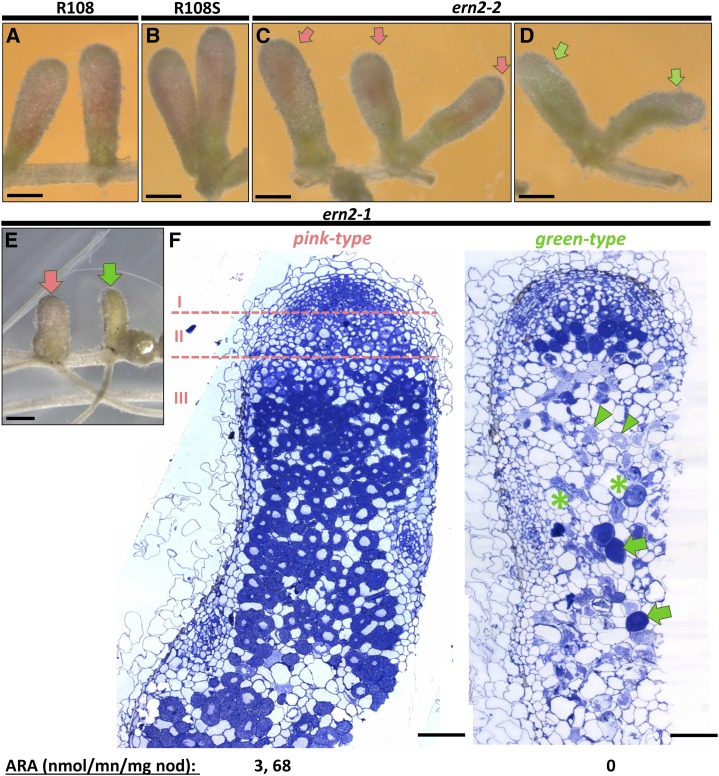Figure 3.
The ern2 mutant lines form nitrogen-fixing nodules that prematurely senesce. Phenotypic analyses of wild-type R108 (A), wild- type R108S (B), ern2-2 (C and D), and ern2-1 (E and F) nodules, collected 4 wpi with S. meliloti. At this stage, nodules from R108 and R108S have a major pink-colored zone indicative of nitrogen-fixation activity. The majority of nodules formed on ern2 (C and E, pink arrows) also have pink-colored zones, although often reduced in size by comparison to the wild-type nodules. Approximately 25% of mutant nodules are green-colored (green arrows in D and E), indicative of nodule senescence. F, Toluidine blue-stained 1-μm longitudinal sections of both pink and green-type ern2-1 nodules. Pink-type nodules exhibit the characteristic zonation of wild-type nodules with meristematic (I), infection (II), and nitrogen-fixation zones (III) while green-type nodules lack a clear nodule zone organization. The meristematic zone is hardly seen and cells in the central nodule region are either undergoing advanced degradation (green arrowheads), are collapsed (green asterisks), or are invaded by saprophytic bacteria (green arrows). Nitrogen-fixation measurements of isolated nodules by the acetylene reduction assay confirmed the absence of nitrogen fixation of green-type nodules. Bars in A to E = 1 mm and in F = 0.2 mm.

